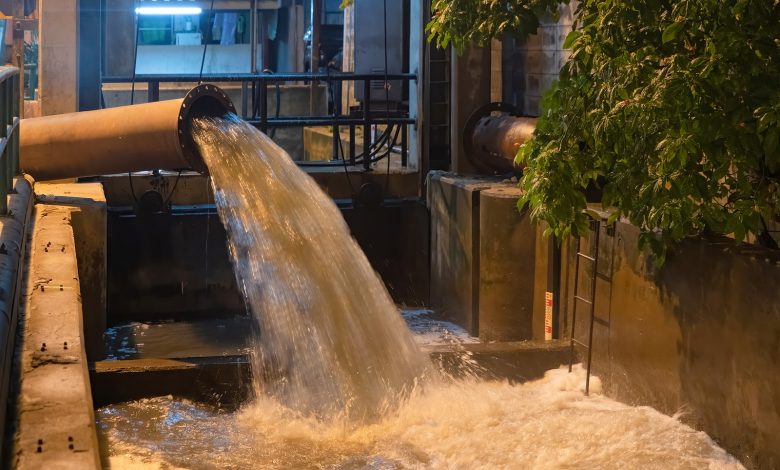Drainage Systems with a Purpose: Safeguarding the Environment from Contaminants

Effective drainage systems are critical in protecting the environment from harmful contaminants. These systems are designed to manage and direct water flow, but they also play a vital role in filtering out pollutants before they reach sensitive ecosystems. This article explores the importance of purpose-driven drainage systems and how they help safeguard the environment from contaminants.
The Role of Drainage Systems in Environmental Protection
Drainage systems are often overlooked in discussions about environmental protection, but their significance cannot be overstated. They prevent flooding, manage stormwater, and, crucially, filter out pollutants that can otherwise wreak havoc on the environment.
1. Contaminant Filtration
Modern drainage systems are engineered to do more than just channel water away from urban and rural areas. They are also designed to capture and filter out contaminants such as oil, heavy metals, and chemicals that accumulate on roads and industrial sites. By incorporating features like silt traps, oil-water separators, and bioretention cells, these systems ensure that only clean water reaches rivers, lakes, and oceans.
2. Preventing Soil Erosion and Sedimentation
Without proper drainage systems, excess runoff can lead to soil erosion, washing away fertile topsoil and depositing sediment in waterways. This sediment can carry with it contaminants like pesticides and fertilizers from agricultural land, leading to nutrient pollution and harmful algal blooms. Effective drainage systems control the flow of water, reducing erosion and sedimentation, thereby protecting water quality and aquatic life.
Types of Environmentally Friendly Drainage Systems
As environmental concerns grow, the design and implementation of drainage systems have evolved to be more eco-friendly. Here are some types of drainage systems that are particularly effective in safeguarding the environment:
1. Permeable Pavements
Permeable pavements are an innovative solution that allows water to seep through the surface, filtering contaminants in the process. These pavements reduce surface runoff, decrease the burden on drainage systems, and help recharge groundwater. By incorporating materials like porous asphalt, permeable concrete, or interlocking pavers, these systems are particularly effective in urban areas where traditional impermeable surfaces dominate.
2. Green Roofs
Green roofs are another sustainable drainage solution that provides multiple environmental benefits. By absorbing rainwater, green roofs reduce runoff and filter out pollutants naturally through the soil and vegetation. Additionally, they provide insulation, reduce urban heat islands, and enhance biodiversity in urban settings.
3. Rain Gardens
Rain gardens are strategically planted depressions that capture and filter stormwater runoff from roofs, driveways, and streets. These gardens use native plants to absorb and filter contaminants, allowing clean water to percolate into the ground. Rain gardens not only protect the environment but also beautify urban landscapes.
4. Constructed Wetlands
Constructed wetlands are engineered ecosystems designed to treat stormwater runoff naturally. They mimic the functions of natural wetlands by filtering pollutants, reducing sediment load, and providing habitat for wildlife. These systems are highly effective in large-scale drainage projects and can significantly improve water quality while supporting biodiversity.
Implementing Drainage Systems with a Purpose
The successful implementation of purpose-driven drainage systems requires collaboration between urban planners, engineers, and environmental experts. It also demands ongoing maintenance and monitoring to ensure that these systems function optimally over time.
1. Urban Planning and Policy
Incorporating sustainable drainage systems into urban planning is essential for protecting the environment. Policies that mandate the use of permeable surfaces, green infrastructure, and other environmentally friendly drainage solutions can significantly reduce the impact of urbanization on natural water cycles.
2. Community Involvement
Educating and involving communities in the maintenance and benefits of sustainable drainage systems can foster a sense of ownership and responsibility. Community participation ensures that these systems are well-maintained and appreciated for their environmental benefits.
Conclusion
Drainage systems designed with a purpose are integral to protecting the environment from contaminants. By incorporating innovative and sustainable solutions like permeable pavements, green roofs, rain gardens, and constructed wetlands as well as drain relining (check out Drainage Care drain relining southampton), we can significantly reduce the impact of urbanization on our natural ecosystems. As we face increasing environmental challenges, purpose-driven drainage systems are not just a necessity—they are a vital component in safeguarding our planet’s future.




